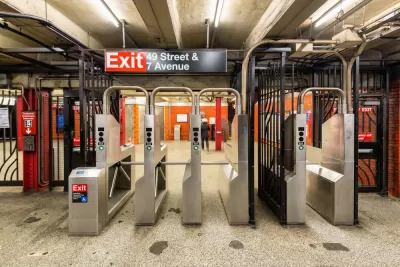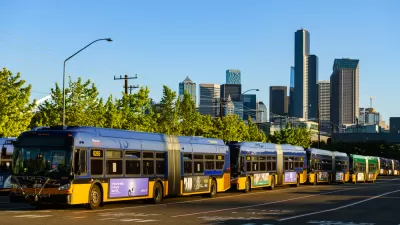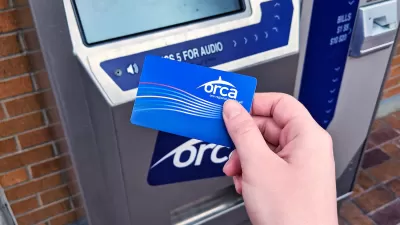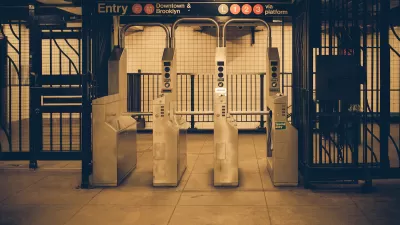While some of the country’s largest transit operators are cracking down on fare dodgers with expensive—and often cumbersome—turnstiles and gates, others are looking deeper to address the root causes of fare evasion.

“Fare evasion is a topic that rears its head regularly; it’s a staple of local TV news and a frequent target of high-profile crackdowns,” write John Surico and Lillianna Byington in Bloomberg CityLab. With ridership still well below pre-pandemic levels and many transit agencies facing a fiscal cliff, transit operators are cracking down on fare evasion even more severely.
But “At the same time, targeting riders with heavy-handed policing in the wake of a deadly pandemic that revealed the inequities of public transit in the US carries with it a tone that didn’t exist before. As does millions of dollars in spending that doesn’t appear to match the cost of the issue it’s trying to address.” Meanwhile, “technological solutions have been elusive, as dodger-resistant turnstiles can be both expensive to install and difficult to use, slowing boarding, limiting accessibility for wheelchair users and irritating paying riders.”
“Critics of fare evasion enforcement often cite the high expense of curbing it,” with a 2018 Streetsblog article pointing out that New York City’s MTA planned to spend $249 million to save $200 million in fare evasion. “Interactions with law enforcement can also pose physical risks, both to riders and transit staffers: Earlier this week, three members of the New York MTA’s Eagle Team, which works to combat fare evasion, were fired at by a bus rider over an unpaid fare.”
To address the problem in new ways, some cities are experimenting with diversion options in lieu of citations, allowing people to pay for transit with EBT cards, or eliminating fares—and the costs of fare collection and enforcement—altogether.
FULL STORY: The Real Costs of Curbing Fare Evasion

Maui's Vacation Rental Debate Turns Ugly
Verbal attacks, misinformation campaigns and fistfights plague a high-stakes debate to convert thousands of vacation rentals into long-term housing.

Planetizen Federal Action Tracker
A weekly monitor of how Trump’s orders and actions are impacting planners and planning in America.

In Urban Planning, AI Prompting Could be the New Design Thinking
Creativity has long been key to great urban design. What if we see AI as our new creative partner?

King County Supportive Housing Program Offers Hope for Unhoused Residents
The county is taking a ‘Housing First’ approach that prioritizes getting people into housing, then offering wraparound supportive services.

Researchers Use AI to Get Clearer Picture of US Housing
Analysts are using artificial intelligence to supercharge their research by allowing them to comb through data faster. Though these AI tools can be error prone, they save time and housing researchers are optimistic about the future.

Making Shared Micromobility More Inclusive
Cities and shared mobility system operators can do more to include people with disabilities in planning and operations, per a new report.
Urban Design for Planners 1: Software Tools
This six-course series explores essential urban design concepts using open source software and equips planners with the tools they need to participate fully in the urban design process.
Planning for Universal Design
Learn the tools for implementing Universal Design in planning regulations.
planning NEXT
Appalachian Highlands Housing Partners
Mpact (founded as Rail~Volution)
City of Camden Redevelopment Agency
City of Astoria
City of Portland
City of Laramie





























